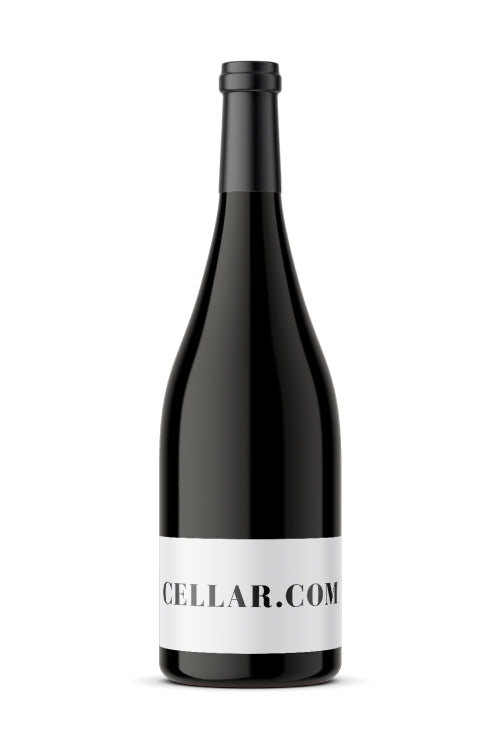1
/
of
1
Leoville Las Cases - 1990 (750ml)
Leoville Las Cases - 1990 (750ml)
Regular price
$449.99
Sale price
$449.99
Regular price
$539.99
Unit price
/
per
As one might expect, this is a brilliant wine, but it remains shockingly young, even for the fast evolving 1990s. Its deep ruby/purple color is accompanied by a classic, nearly restrained set of aromatics that includes notions of sweet black cherries, black currants, lead pencil, and wet stones. In the mouth, it is full-bodied, and while technically low in acidity, there is a freshness, delineation, and classicism in this full-throttle, rich, concentrated, impeccable 1990. While still youthful, it is easy to appreciate despite its substantial tannins. It is not quite as backward as the 1990 Lafite Rothschild or 1990 Latour. Anticipated maturity: now-2035. Release price: ($500.00/case)
Robert Parker - 96 points
Robert Parker - 96 points
Share :

- varietal
- Region
- Sub - Region
- Type
- Reviews
Product Review
As one might expect, this is a brilliant wine, but it remains shockingly young, even for the fast evolving 1990s. Its deep ruby/purple color is accompanied by a classic, nearly restrained set of aromatics that includes notions of sweet black cherries, black currants, lead pencil, and wet stones. In the mouth, it is full-bodied, and while technically low in acidity, there is a freshness, delineation, and classicism in this full-throttle, rich, concentrated, impeccable 1990. While still youthful, it is easy to appreciate despite its substantial tannins. It is not quite as backward as the 1990 Lafite Rothschild or 1990 Latour. Anticipated maturity: now-2035. Release price: ($500.00/case)
Product Score
96
Cabernet Sauvignon is one of the most prominent dark-skinned grape varieties except Merlot in terms of area under vines, but which comprises our largest selection of wines. Grown in just about every wine producing region and climate, Cabernet Sauvignon can express a huge range of aromas, from green peppers in cool climates through to dark jammy fruit in hot regions. Common aromas include blackcurrants, mint, graphite, and forest floor, to name a few. Maturation in small oak barrels can develop a complex range of aromas from cedar wood, cigar box and tobacco to eucalyptus and undergrowth. Cabernet Sauvignon’s success is partly due to its ability to adapt to a range of soils and climates. It is the main constituent of the Bordeaux blend in the revered communes of Pauillac, St. Estephe and St. Julien, and has achieved equal success in California’s Napa Valley. It is grown extensively throughout Southern Australia, with some outstanding examples from the Terra Rossa soil of Coonawarra. Cabernet Sauvignon also plays an increasing role in Tuscany, Italy, where it is blended with native varieties such as Sangiovese to produce the Super Tuscans.
Located in South West France, Bordeaux is one of the World’s most important wine producing regions. The Gironde estuary and its two tributaries, the Garonne and Dordogne, splits the region into the ‘left bank’ and ‘right bank’. The left bank, on the west side of the Gironde, consists of the Médoc and Graves, while Pomerol and St. Emilion are located on the right bank. In between the Garonne and Dordogne is the Entre-Deaux-Mers region, French for 'between two seas'. From north to south the Médoc includes the famous classed growth chateaux in the communes of St. Estephe, Paulliac, St.Julien, and Margaux. The Graves and it’s enclave Pessac-Léognan make both red and white wine. While those of Pessac- Léognan’s are dry, Sauternes and Barsac make world-famous sweet whites. Although Bordeaux makes some of the world’s most expsenive wines, less expensive but good value alternatives come from Moulis and Listrac on the left and Bourg and Blaye on the right offer less expensive wines for earlier consumption.
Situated between Pauillac, to the north and Margaux a few miles to the south, St. Julien is one of the Medoc’s most consistent communes. Although there are no firsts, there are a total of 11 classed growths, five of which include the notable second growths: Léoville-Las-Cases, Léoville Barton, Ducru-Beaucaillou, Léoville-Poyferré, and Grauad-Larose. Although hard to generalize, the wines approach an intriguing balance between the different styles of its neighboring communes. They are rich, aromatic wines, similar to but slightly less powerful than Pauillac and yet are not as austere and rustic as St. Estèphe, while offering some of the seductive elegance of Margaux.
Red wine is wine made from dark-coloured grape varieties. The color of red differs based on the grapes variety or varieties used.Interestingly, black grapes yield a juice that is greenish-white. The actual red color comes from anthocyan pigments (also called anthocyanins) from the skin of the grape (exceptions are the relatively uncommon teinturier varieties, which produce a red colored juice). Most of the production centers around the extraction of color and flavor from the grape skin.


